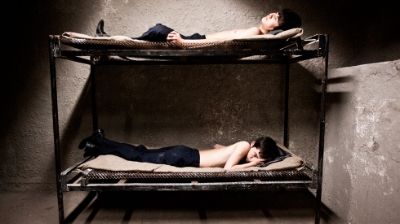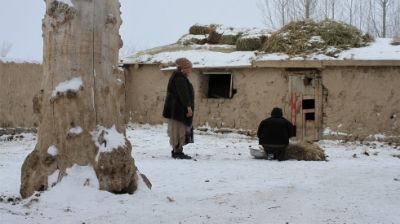
Aside from a certain momentarily popular satire, which will receive any extra publicity here, this is the first narrative reference to Kazakhstan I’ve encountered, and the first genuine cultural artifact emanating from and reflecting on the Eurasian country located on the southern border of Russia. As a result, it’s a bit difficult to hard divorce its qualities as a feature film from its allure as a source of insight into a distant land.
HARMONY LESSONS is a through and through bleak look at society from the point of view of an adolescent growing up in one of the country’s rural villages. Some of the protagonist’s trials are universal to this age: Insecurities about sexuality, preoccupation with physical inadequacies, and fitting in with peers abound. The story shares some very dark themes with films about this age as it relates to the school experience from other Asian countries: Confessions (Japan) and the animated King of Pigs (South Korea) come instantly to mind for depicting similar tales of student hierarchies and systematic bullying.
Only, Kazakhstan stands apart as having a more recent surrounding culture of tangible violence for most of its population at large. Students manufacture bullets during shop class and are assessed for their worth based largely on their physical attributes. Ex-convicts appear in school to collect money boys have raised through busking, presumably for paramilitary or fundamentalist religious factions; Daily life has a curriculum with a clear emphasis on survival and warfare.
Things are set in motion when a group of boys play a prank on Aslan during an institutionally arranged medical examination. It’s the stuff of typical adolescent male obsessions with sexuality. Not only is it humiliating to Aslan, it is an offense to Muslim religious believes, something deeply ingrained within him. Aslan then deals with bouts of physical disgust over the incident and isolation, as the other boys have shunned him. This takes place at the insistence of Bolat, a kind of gang boss to the boys in school, who threatens physical harm to anyone associating with Aslan.
Soon, a boy from the city arrives. Not initiated into the gang mentality that runs through the school, he forms a friendship with Aslan. His metropolitan ways, however, also put him at odds with the bully of the school, making him another target of their abuse. (This appearance of an outsider who bands together with the main character is very reminiscent of King of Pigs, making me wonder if the film was in fact an influence)
Aslan navigates his isolation, and a growing desire to act against the ceaseless injustice. It is not only an urge to protect himself, but concern for his newfound friend, as well as moral outrage for the victimizing of many of the boys at his school.
These are the important factors in the film’s grueling first act, which is taken even further when a criminal investigation and imprisonment are incorporated into the story, suggesting the oppressive machinations of school can be traced to the behaviors of adults.
Pacing is slow. The dwelling on many long focused shots of dreary interiors suggests director Emir Baigazin wants us to feel the psychic pain of this growing up in this environment. His use of wildlife imagery is none too subtle, but effective, starting with a brutally efficient sheep-butchering scene. Later, cockroaches are drowned and mutilated in intricate traps constructed by stressed and inwardly collapsing Aslan. A homemade terrarium is constructed, in which bottled up lizards are fed the helpless insects, growing larger and larger until they eventually turn on each other. There is little question that Baigazin wants to suggest this society has direct dehumanizing effects on its children.
A point of curiosity is the absence of onscreen depictions of fatal violence that mark critical points in the narrative. It is as if to say death is not as damaging as the other psychologically and physically abusive acts that appear throughout the film. Death is perhaps an escape, a message that is suggested in some of the film’s final imagery.
While an overall gloomy affair, HARMONY LESSONS is solid in presenting its societal critique. It gets us scarily close to a world that exists as only a distant idea for most.
HARMONY LESSONS receives its world premiere at the 2013 Tribeca Film Festival. Visit the festival website for more details.

No comments:
Post a Comment